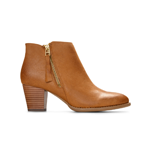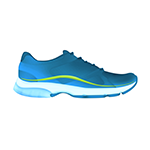
WHAT ARE ORTHOTICS?

If you have pain or chronic discomfort in your feet, heels, calves, knees, legs, or back, you’ve probably heard of orthotics as a possible solution. But what is orthotics, exactly? Or rather, what are orthotics?
Here at Vionic, we prioritize foot health. Our podiatrist-designed footwear styles are made with built-in orthotics, and we also offer a range of supportive shoe inserts. Needless to say, we know a thing or two about the different types of orthotics. Here’s what you should know.
What Does Orthotics Mean?
Technically speaking, the word “orthotics” refers to the healthcare sector dealing with devices that promote alignment, like braces and splints. It can also involve support for the feet to correct an orthopedic (bone or muscle deformity) issue. When people talk about orthotics meaning or “orthoses” in relation to footwear, they’re usually referring to special supportive shoes or inserts.
Whether you call them orthotics, inserts, or insoles, the molded products are either built into a shoe or inserted into the footwear of your choice[1]. They’re designed with arch support, contouring, and cushioning and can be made of rubber, plastic, foam, or sometimes cork. You can get over-the-counter options from somewhere like Vionic or prescription orthotics from a podiatrist (AKA foot doctor).
What Are Orthotics For?
Ultimately, orthotics provide your feet with adequate support so that they can move efficiently in a neutral position without a lot of pounding. A podiatrist might prescribe a custom orthotic or recommend an over-the-counter orthotic insole to treat a number of conditions[2].
A functional orthotic can be effective in treating or relieving symptoms of:
- Arthritis, such as osteoarthritis and rheumatoid arthritis, which can cause pain, discomfort, and poorly positioned feet
- Back pain or knee pain caused by poorly positioned feet, inward-rolling arches, or lack of cushioning
- Flat feet caused by inadequate arch support and improper foot positioning
- High arches, which can stress the muscles in the feet and calves and lead to foot pain or discomfort in the shins, knees, and calves
- Plantar fasciitis, a common cause of heel pain, often resulting from high arches or improper footwear
- Heel spurs, a painful condition often caused by ill-fitting footwear that occurs when excess bone forms behind or underneath the heel
- Overpronation, which occurs when the arches roll inward because the outer edge of the heel hits the ground first when walking
- Bunions, which can be immensely painful and lead to foot deformities
- Hammertoes, a common side effect of bunions on or around the big toe that can result in deformities on the ball of the foot
- Bursitis, a painful inflammatory condition involving fluid-filled pockets in the toes and heels
Foot orthotics can also be helpful for those who need extra support following an injury. It can aid in the healing process and reduce long-term pain and discomfort.
Do Orthotics Work?
Now that you know what they’re used for, you might be wondering, Do orthotics work? Whether you suffer from back pain, high arches, flat feet heel spurs, hammertoe, or plantar fasciitis, orthotic shoes or inserts can be immensely beneficial.
Not only that, but they can address alignment issues by correcting problems with how you stand, walk, run. In some cases, wearing over-the-counter or prescription foot orthoses can prevent the need for corrective surgery.
Having said that, orthotics don’t guarantee alleviated symptoms or a full recovery from various foot conditions. While they do help many individuals, it’s important to remember that everyone is different. What works for one person may not work for the next person.
The effectiveness of orthotics depends on:
- Your health history and current condition
- The manufacturer or doctor prescribing them
- How well they fit
- The footwear you place your inserts in
- How often you wear them
- Your lifestyle and physical activity level
The orthotic shoes and inserts from Vionic are designed to relieve pain and discomfort in the feet, heels, ankles, calves, and legs. In a peer-reviewed study, our contoured sandals were more effective at alleviating heel pain than traditional flip-flops and just as effective as our arch support inserts which happen to be some of the best orthotic insoles.
How Do Orthotics Work?
At this point, you know what orthotics are, what they’re supposed to do, and whether they’re effective. But how do they work, exactly? By providing arch support, cushioning, and heel stability, orthotics evenly disperse the weight of your feet. This puts them in a neutral position and prevents you from overcorrecting for ill-fitting footwear or existing foot issues.
For instance, since flat-soled flip-flops literally flop around on your feet, it can make your heels hit the ground first to overcorrect for the lack of support. This can lead to overpronation, heel pain, and other uncomfortable conditions.
While orthotics alone can be a game-changer for many people, they’re usually recommended as part of a comprehensive treatment plan. This may include at-home foot care, like icing the affected area, stretching, physical therapy, and supportive shoes. Vionic’s supportive footwear styles have built-in orthotics, allowing you to kill two birds with one stone.
How to Tell If You Need Orthotics
Like many people in the world, you probably want to know how to tell if you need orthotics. Aside from having one of the foot conditions we mentioned above, you might be a candidate for functional orthotics if you experience ongoing pain in your feet, ankles, or legs. Another tell-tale sign is if it hurts to walk in shoes. Also, when stretches, icing, and therapeutic exercises aren’t effective in relieving your foot symptoms, orthotics might be a good option[3].
Of course, the best way to tell if you need them is to see a podiatrist. But you don’t need a prescription to try over-the-counter options like those offered from Vionic. And you have nothing to lose by trying them—except maybe pain and discomfort. In other words, even someone without a diagnosable foot condition can benefit from wearing supportive footwear and orthotic insoles.
Orthotic Inserts from Vionic

If you have a pair of flat-soled booties, slip-on sneakers, or dress shoes you love but hate wearing because they lack support, inserts might be the way to go. Vionic carries several men’s and women’s orthotic inserts with podiatrist-designed arches. They provide soothing foot support, increased stabilization, and comfortable cushioning while reducing pronation.
Our full-length and 3/4-length orthotic insoles can be inserted into a variety of shoe styles, no matter what size you wear. We’re talking boots, flats, cleats, cross-trainers, loafers—you name it. Vionic’s active orthotic inserts are ideal for running, walking, tennis, and other activities that require motion control, heel support, and shock absorption. Our active inserts can help eliminate shin splints and prevent injuries for many athletes.
Shoes with Built-In Orthotics from Vionic
Each pair of shoes from Vionic has built-in orthotics, meaning arch support, comfy cushioning, and heel stability are embedded into the sole. But unlike many orthotic footwear brands, our designs never sacrifice fashion.
We carry an impressive selection of shoes for men and women in a broad range of styles. This includes sandals, heels, wedges, boots, dress shoes, casual sneakers, active footwear, and slippers. Many of the shoes in our collections are recommended by the AMPA (American Podiatric Medical Association), meaning they’re certified to provide adequate support and improve foot health.
Are you ready to take your foot comfort to the next level? Try a pair of shoes or orthotic inserts from Vionic today.
Sources:
1. https://www.webmd.com/pain-management/what-are-shoe-orthotics#1
2. https://www.health.harvard.edu/blog/do-i-need-orthotics-what-kind-2018102915182
3. https://www.healthline.com/health/bone-health/orthotics










